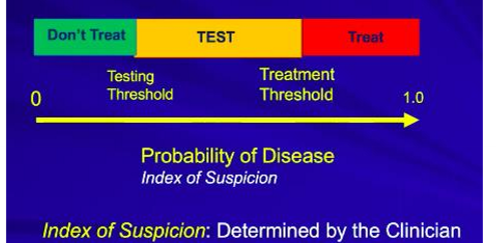Screening, Diagnostics Testing, and Risk Assessment in Dentistry
1/13
There's no tags or description
Looks like no tags are added yet.
Name | Mastery | Learn | Test | Matching | Spaced |
|---|
No study sessions yet.
14 Terms
diagnostics in dentistry
-can be used to determine if a disease is present, to characterize a disease, or to stage a disease
-important to establish a clear diagnostic criteria (index test) for a specific disease before diagnostic test can be developed
-uses of diagnostics in dentistry: oral lesion, caries, periodontal disease
screening for disease
-does NOT make definitive diagnosis
-used to categorize an individual as being high or low risk for a particular condition
-usually done on individuals who are asymptomatic
-may have other risk factors for the disease which would indicate the need for screening
-2 assumptions necessary to determine whether it’s practical to screen for a disease: condition can be detected before sx occur & an intervention at the pre-clinical phase is more beneficial to the individual than intervention after sx develop
diagnostic test
-establish an actual diagnosis
-usually are performed when an individual presents with: some sign or sx of a potential condition and/or an indication that the patient is at high risk for a condition based on a screening test
screening for oral cancer- threshold model
-based on reaching a certain threshold that will determine placement in green, yellow, or red area
-index of suspicion: probability of disease, determined by clinician
-testing threshold: the probability at which the value of testing becomes greater than the value of not treating (testing > not treating)
-treatment threshold: probability at which the value of tx becomes greater than the value of the testing (treatment > testing)
-factors which affect where the thresholds occur include: accuracy of the test, risk of the diagnostic test, benefit of tx to patients with the disease, risk to pts with (false negatives) and those without the disease

accuracy of diagnostic tests
-true positive: patient with disease and positive test
-true negative: patient without disease and a negative test
-false positive: patient without disease and a positive test
-false negative: patient with disease and a negative test
sensitivity
-ability of a diagnostic test to correctly identify when a disease is present
-ability of a test to detect a disease
TP/(TP + FN)
specificity
-ability of a diagnostic test to correctly identify when no disease is present
-ability of a test to detect health
TN/(TN+FP)
receiver-operator cure
-used to determine ideal sensitivity v specificity relationship
positive predictive value (PPV)
-ability of a test to predict whether a patient has disease
PPV = TP/(TP+FP)
negative predictive value (NPV)
-ability of a test to predict whether a patient does not have a disease
NPV = TN/(TN+FN)
likelihood ratio
-probability of a person with the condition having a specific test result/probability of a person without the condition having a specific test result
-used to interpret the usefulness of a diagnostic test
-higher the value, more likely to have a disease with a positive test
risk factor
-may indicate an aspect of personal behavior, an environmental exposure or an inborn or inherited characteristic which is associated with disease-related conditions
-exposure to a risk factor associated with an increased probability of occurrence of a disease without necessarily being a causative factor (risk indicator)
-may be modified by intervention
-potential risk factors for oral cancer: age, gender, smoking, alcohol, chewing tobacco use, presence of specific bacteria, genetics
-types of risk factors for periodontal disease: genetic, systemic disease, behavioral, clinical, microbiologic
relative risk
-incidence rate among the exposed/incidence rate among the non-exposed
odds ratio
-OR = (a*d)/(b*c)
-a= disease with exposure to risk factor
-b= no disease and exposure to risk factor
-c= disease with no exposure to risk factor
-d= no disease and no exposure to risk factor
-used mainly in case control studies with logistic regression (control for multiple confounding variables)
-usually presented as an odds ratio with a 95% confidence interval
-presents data in a more useful way to the clinician and patient